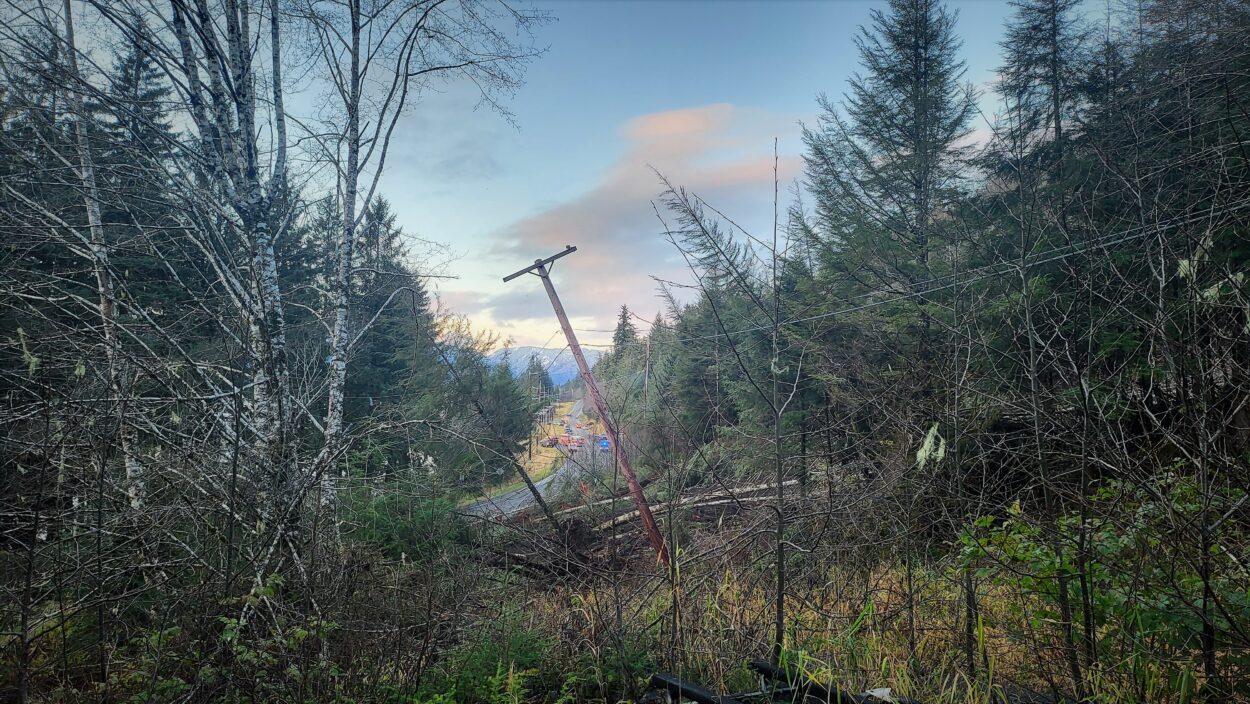
Jeff Meucci lives on a landslide-prone hillside in Petersburg. He knows heavy rain can be a trigger for slides, so when the forecast called for wet weather on August 25th, he started paying attention.
“Myself and a couple friends started tuning in to what was happening with the weather,” he said. “You know, two and a half to three and a half inches of rain.”
Southeast Alaska is prone to landslides – there have been four deadly slides in the region within the last decade. Meucci is part of a group working to create a landslide warning system for the several miles of steep slopes above Petersburg’s Mitkof Highway. He said during the downpour he was checking data from the weather stations the group recently installed along that hillside.
But there wasn’t an exact threshold he was looking out for. Historical weather data can predict risk in areas susceptible to slides, but Sunny Rice, also with the group, said that data doesn’t exist in Petersburg – yet.
“We don’t have, like, the magic formula: “When it’s this rain and this wind, worry about landslides.” That’s what hopefully someday we’ll get to,” she said.
Rice and Meucci said the warning system will likely be similar to one in Sitka. The system there estimates landslide risk as low, medium, or high, based on weather conditions.
Rice said the Sitka Sound Science Center created the risk model with lots of 24-hour weather data and landslide histories.
“They looked at when they had had landslides, and they tried a whole bunch of different variables, like how much rain did we have in the last week, or how much rain did we have the day before? And they included wind in those variables,” she said. “And the ones that made sense for Sitka were just the amount of rain in the last three hours.”
But Rice said Sitka’s model can’t be used in Petersburg. That’s because factors that affect landslide risk are distinct in the two towns – things like soil composition and depth, slope angles, and hillside vegetation. That means landslides could let loose in very different weather in the two places.
There’s not enough data in Petersburg to create a model yet. Before the new weather stations were installed, the only rain, wind, and temperature data was collected at Petersburg’s airport, miles away from the stretch of hillside above Mitkof Highway. But in order to link conditions to landslide risk, researchers need to know what was happening at the time of a slide, *in the area* of the slide. That’s where the new weather stations come in.
Rice said that while she knows it’s hard not to have the formula yet, she hopes the real-time information from the weather stations can still be useful to residents in the area.
“Because we don’t have this exact knowledge, we just thought, ‘Let’s give some information.’ People can apply their own understanding and knowledge and history to this little bit of ongoing data and maybe make decisions that way,” she said.
Jeff Meucci appreciates the information.
“You know, before, when it was raining sideways, you never really knew how much rain was coming down in a certain period of time,” he said.
Even though there’s no established risk threshold yet, he said the information from the weather stations does make him feel safer.
The total rainfall recorded at 5.6 mile Mitkof Highway on Sunday, August 25th was 2.84 inches. There were no landslides reported in the area. You can find data from the weather station at 5.6 mile Mitkof Highway here.











